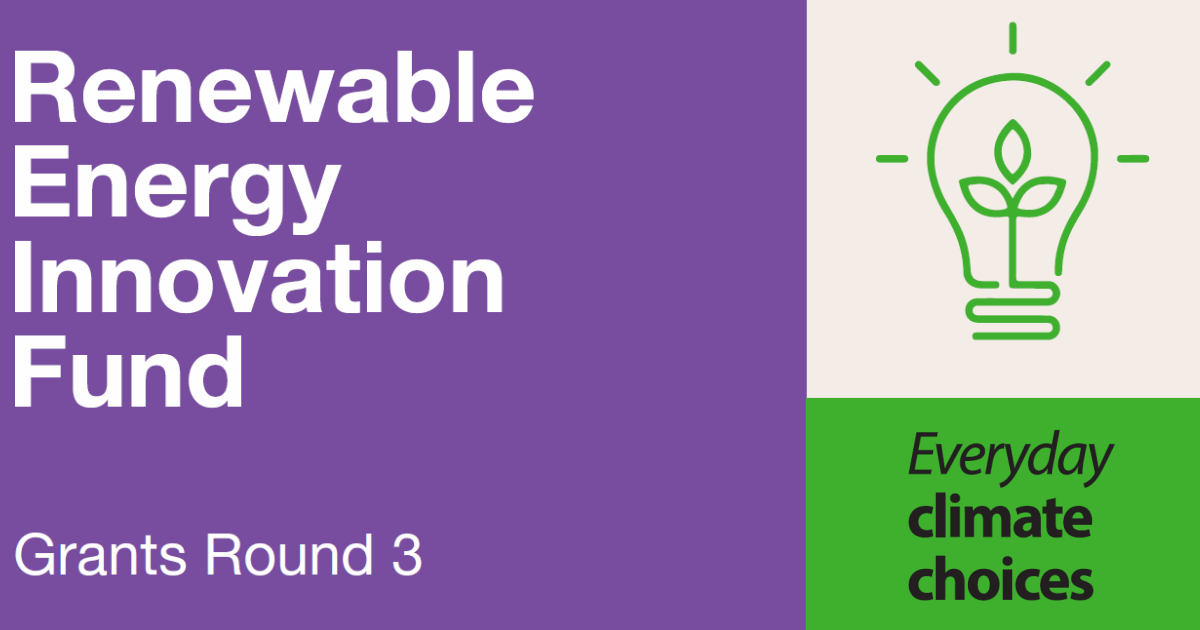
Innovation in Canberra’s renewable energy sector is to get another boost under the ACT Government’s Renewable Energy Innovation Fund.
The Renewable Energy Innovation Fund (REIF) was set up with $12 million sourced from industry commitments associated with the ACT Government’s first and second wind auctions. The REIF has four aims:
- Support renewable energy companies based in the Territory.
- Attract new ventures to the region.
- Develop new research and trades training opportunities.
- Support development of a renewable energy ecosystem.
Supporting Solcast’s Success
Among previous beneficiaries was Solcast, which was established in 2016. The company took a new approach to solar forecasting and modeling technology, built on assimilating massive amounts of data from various sources and turning that into valuable reports and tools primarily geared towards electricity network operators, solar farm owners, software developers and engineers. Solcast also has a free tool for home solar owners.
Commenting on the support REIF provided, Solcast’s Chief Technology Officer Dr. Nick Engerer1 said:
“This grant allowed us to expand our team and start building the proof of concept. We have now expanded to a team of 12 and service over 30 solar farms nationally. The software is now used by 17,000 clients globally.”
Grants Of Up To $300,000 Available
The third round of the REIF is to provide up to a total of $1.5 million in grants. Individual projects can apply for funding between $50,000 and $300,000 (excluding GST), but they must be able to match funding either through private funds, Commonwealth Government funding, in-kind contributions or a combination of the three. The guidelines note higher cash contributions will be viewed favourably during assessment.
“Investing in new and emerging technologies is key to building our growing renewable energy sector and addressing climate change, while also supporting local businesses,” said ACT Minister for Energy and Emissions Reduction, Shane Rattenbury. “The new round will develop and commercialise new businesses and projects in the renewable energy, battery storage and zero emission transport sectors.”
Applications for the third round of REIF grants will close at 11.59pm on 16 January 2023. Eligibility guidelines can be found here.
Renewable Energy In The ACT
The ACT walks the talk (and research) on renewables, with 100% of electricity consumed in the Territory coming from renewable sources since 2020. The Territory also aims to complete a transition away from gas by 2045, and as part of this effort recently expanded its Home Energy Support Program.
In terms of small-scale solar power in the ACT, i.e. systems under 100kW capacity, there had been more than 43,464 installations across the Territory as at the end of August this year.
Live in the ACT and considering installing solar panels? Check out SolarQuotes’ list of great solar installers servicing Canberra.
Footnotes
- Dr. Engerer contributed a couple of posts on SolarQuotes back in 2018/2019 (here and here). Some of the links to Solcast in the posts no longer work, but if you’re looking for their free rooftop solar forecasting tool, you can register here. ↩

 RSS - Posts
RSS - Posts



Regarding 100% of electricity consumed in the ACT coming from renewables since 2020, is that actually true?
My understanding is that the ACT never built powerplants, instead relying on imports. (Okay looks like they did have a small coal plant but that ceased operation over 60 years ago).
They now have a handful of small solar farms (small in comparison to regular power plants), plus residential rooftop solar, and continue to rely on imported power. Since renewable electricity can’t be distinguished from non-renewable electricity – power is power, isn’t the commitment to renewable energy thus really a matter of word games? Yes they’re banning the production of non-renewable energy within the territory, but they’re still relying on non-renewable energy to back them up, or am I missing something???
The ACT isn’t that big. They do have rooftop solar, a very small amount of ground solar capacity, and a small amount of wind. But rooftop solar is the only one that’s practical to expand — given that it’s cheaper to build wind and solar farms outside the ACT. The ACT contracted for renewable energy to be supplied from outside the ACT. This is in addition to the renewable energy that would have been generated if the ACT hadn’t done this.
After dark, the only “renewable” energy generated in the ACT is from LFG.